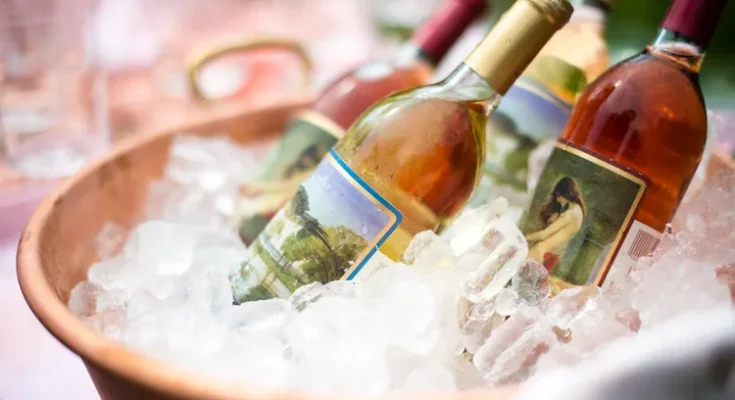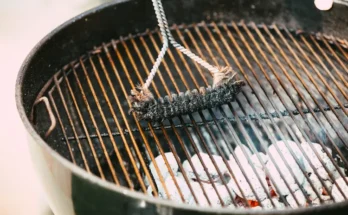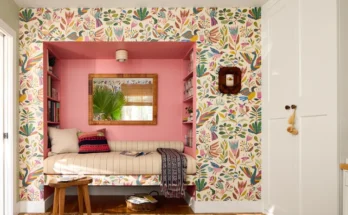All signs indicate that the theme of this summer is staying in, and the wine bar trend taking over TikTok right now confirms it. An at-home wine bar is the fun new get together that blends the sophistication of wine tasting with the growing interest in hosting (à la Martha Stewart style). Think curated wine selections, thoughtful pairings, on-theme decor, and a cozy, moody atmosphere.
If you’re looking for a fun way to gather with friends this summer, a wine bar party may be just what you’re looking for. Luckily, you don’t need to be a sommelier to throw one—in fact, you don’t even need an extensive knowledge of wines. The key to creating a wine bar at home, experts agree, lies in crafting the right atmosphere more than anything else. Leave the snobbery at the door: This trend is all about making wine approachable and fun.
To help you plan your own wine bar party, we spoke to a handful of experienced sommeliers and wine experts. Here are their top tips for creating a relaxed and intimate atmosphere, including selecting your bottles and crafting a menu.
Curating Your Wine Selection
First up: choosing the wines. This can feel like the most daunting part if you’re relatively new to the wine world, but it doesn’t need to be. Just remember to balance crowd-pleasing classics with trendy, conversation-starting bottles.
“When you’re just starting out, try to keep things fun and approachable,” says Jess Salyer, beverage director at Cúrate in Asheville, North Carolina. “I’d start with six bottles, just enough to keep things fresh without overwhelming you.”
Start with two whites: one bright and zippy and another that has a special feature, such as being aged in oak or amphora, Salyer says. Thomas Villani, master mixologist at Thompson Savannah agrees, recommending enduringly-popular options like Pinot Grigio, Chardonnay, and Sauvignon Blanc.
“Consider offering two styles of Sauvignon Blanc—one from New Zealand and another from France’s Sancerre region—to showcase different expressions of the grape,” he says.
Next, the reds. Stick to two: one light and one with more body. Consider a light-to-medium-bodied Pinot Noir from California’s North Coast, balanced with an old-world varietal like a Spanish Tempranillo or a Syrah-heavy blend for a bolder option, Villani says. He also loves a full-bodied Napa Cabernet—quintessential at any home wine bar.
Then, round out the selections with a sparkling wine and one unexpected pick. “Maybe a skin contact white or a clarete style,” Salyer recommends. This provides a broad yet manageable menu with options for everyone to try without feeling overwhelmed by choices.
Consider a Theme
For a fun twist, Paige Comrie from Wine with Paige suggests creating a wine menu with a custom theme in mind. “Whether it’s ‘wines from women winemakers’ or ‘around the world in four pours,’ a little theme adds a lot of charm,” she says. This is also an easy place to start if you’re a total newbie who feels overwhelmed by the thought of light- versus medium- versus full-bodied reds and whites.
Create Food Pairings
The world of wine pairings is a vast and intricate science, but for an at-home wine bar, the experts acknowledge that it’s best to keep things simple. Generally, white wines pair well with lighter dishes, such as fish, chicken, cured meats, and cheeses, while fuller-bodied red wines tend to go with red meats and dishes featuring hearty, savory flavors. However, it’s a good idea to do some quick research into the food pairings that work best with the specific kind of wine you’re offering, as these over-simplified rules don’t always apply.
“Bright, acidic white wines, like Sauvignon Blanc, pair beautifully with pork, fish, and fresh cheeses—or a charcuterie board with olives and cured meats,” Villani says. “Fuller-bodied reds with high tannins, like Cabernet or a Syrah blend, are best alongside richer dishes with higher fat content, such as steak or braised short ribs.”
As such, it’s a smart idea to serve a food pairing for every wine you’re offering. Unless you’re planning a formal, sit-down dinner, this will likely look like trays of snacks or hors d’oeuvres placed throughout your room. Keep portions small and approachable to make things simple for your guests (and yourself!). That way, guests can graze with one hand and hold their glass with the other, says Salyer.
Set the Mood
If you’ve been to a wine bar, you know that creating the ambiance is just as important as selecting the wines. Start with the basics: dimmed lighting, a curated playlist, and candles scattered throughout the space. Then, ensure you have a dedicated bar area for serving and displaying your selections and supplies (like a wine fridge and decanter). Include glassware, serving trays, cloth napkins, an ice bucket for sparkling varietals, and interesting share plates.
“I prefer stemmed wine glasses that are versatile and work with all grapes and wine styles, so I don’t need to pull out a new glass with every bottle—and wash extra dishes,” Salyer says.
Once you’ve covered the essentials, add the finishing touches. A wine menu printout to highlight the wines and suggested snacks is a simple, thoughtful touch your guests will appreciate. Plus, it’s totally post-worthy. “A cute sign or menu board is TikTok gold,” Comrie says.
Don’t Forget the Presentation
During the event, there are a few details to keep in mind: First, it’s essential that your wines are served at the correct temperature.
“Keep sparkling on ice, chill whites until they’re bright, and pop reds in the fridge for a bit before guests arrive. You’ll taste the difference and look like a seasoned pro,” Salyer says.
Next, the proper way to pour: According to Salyer, it’s best to fill your guests’ glasses halfway, or about two to three ounces. This helps your bottles last longer and allows everyone to enjoy a taste of each while keeping their wits about them.
Most of all, have fun with it. A relaxed host lends to a comfortable event, so pour yourself a glass, and enjoy some good food and company.



